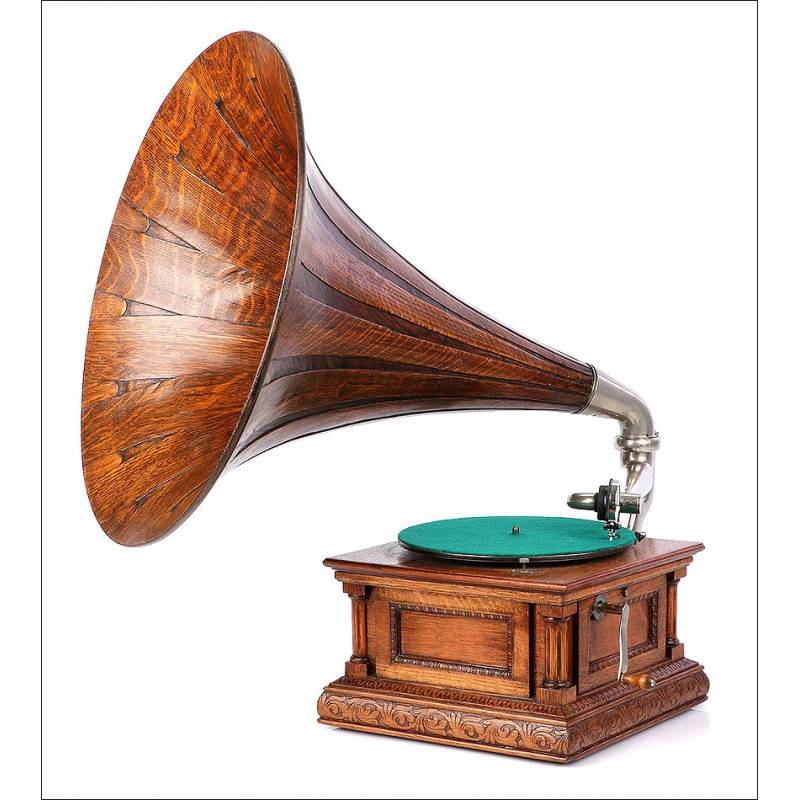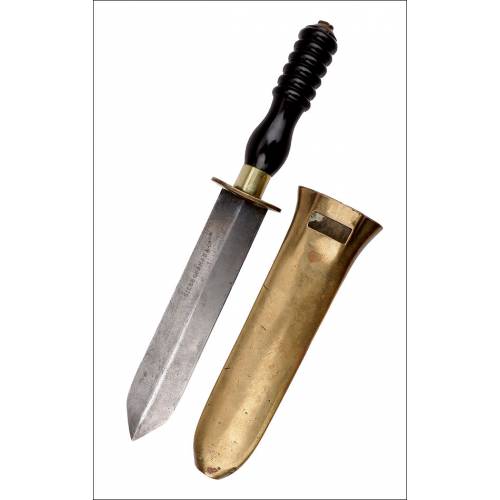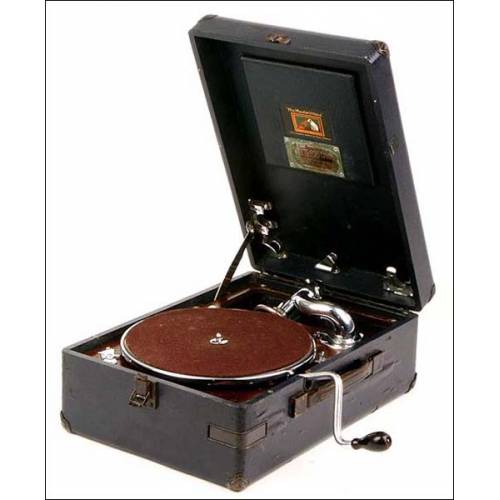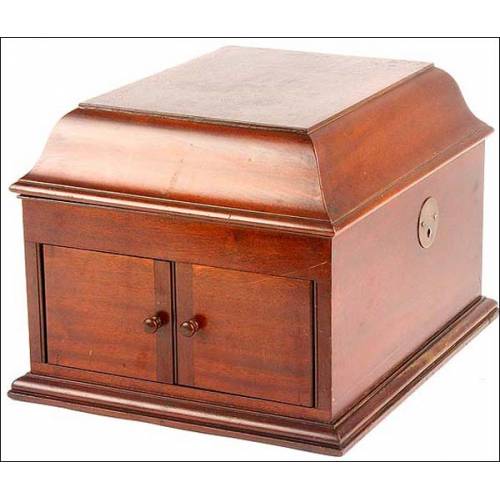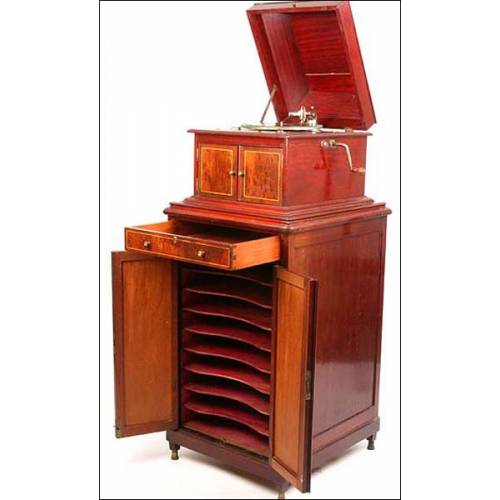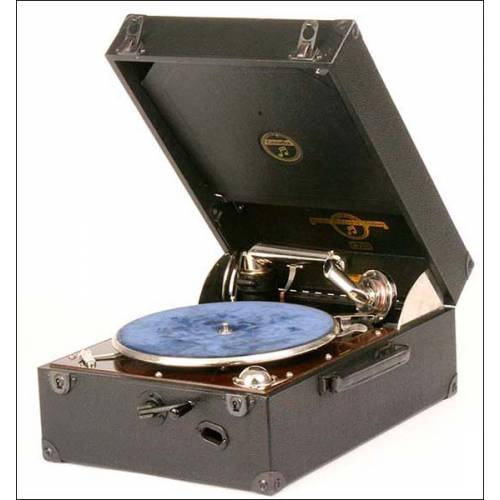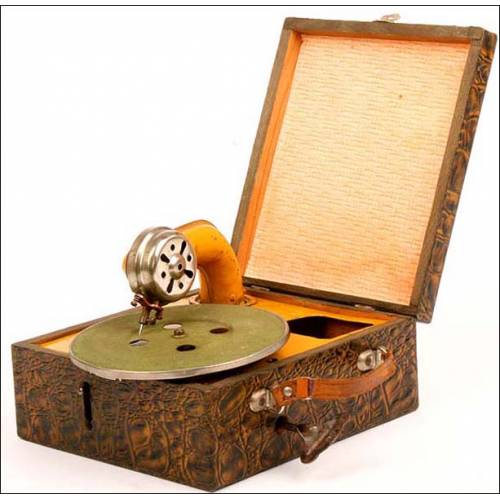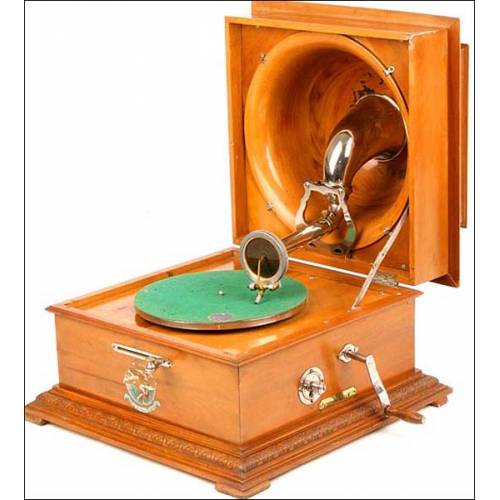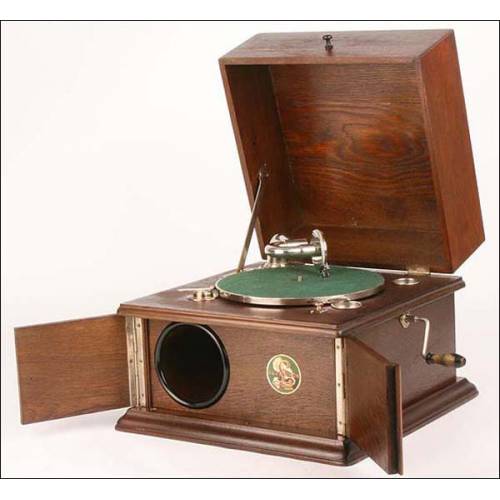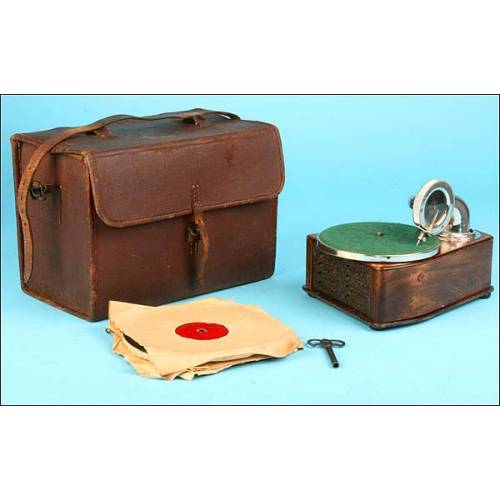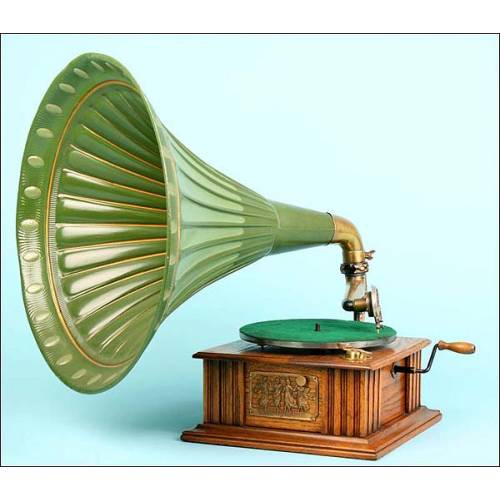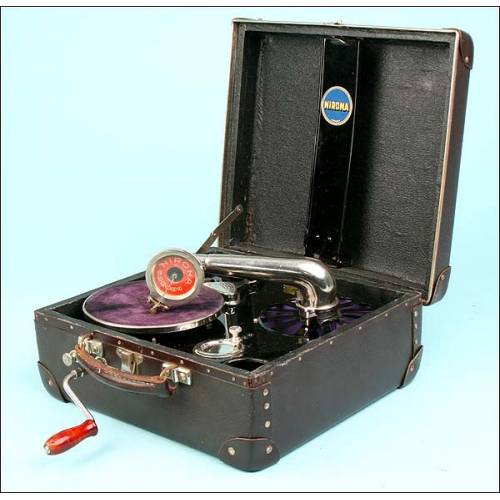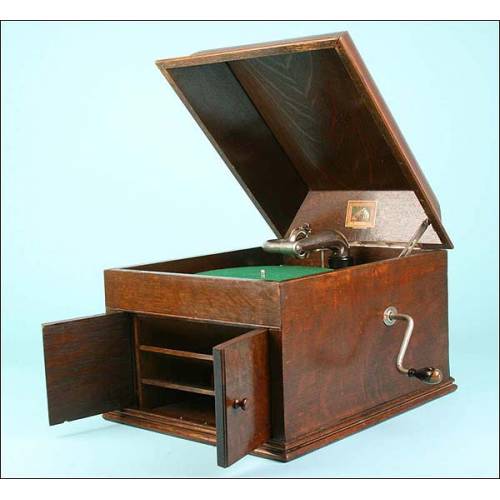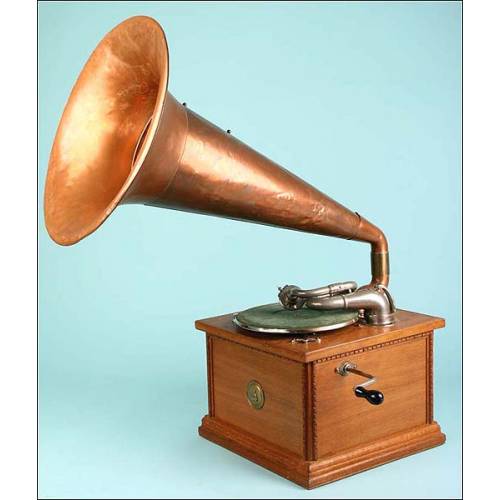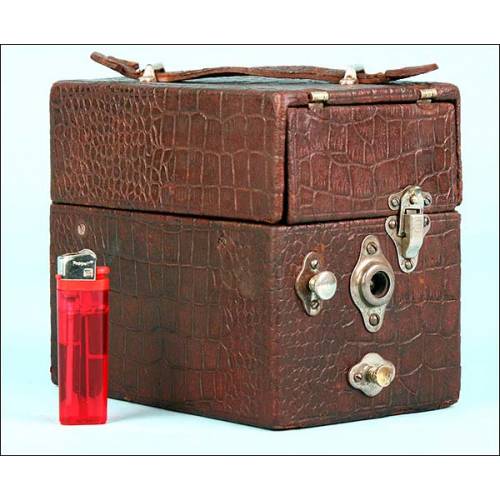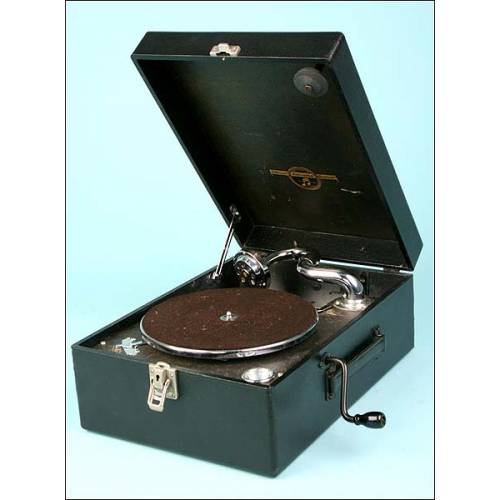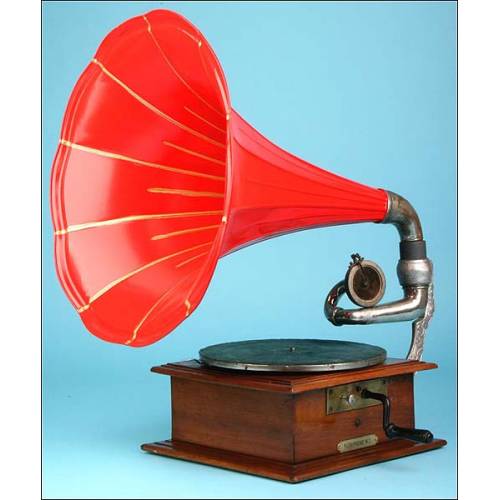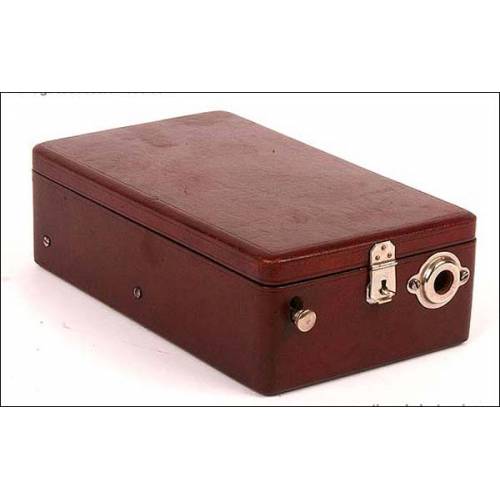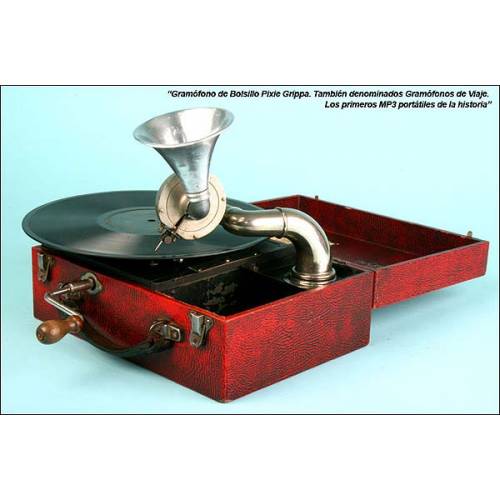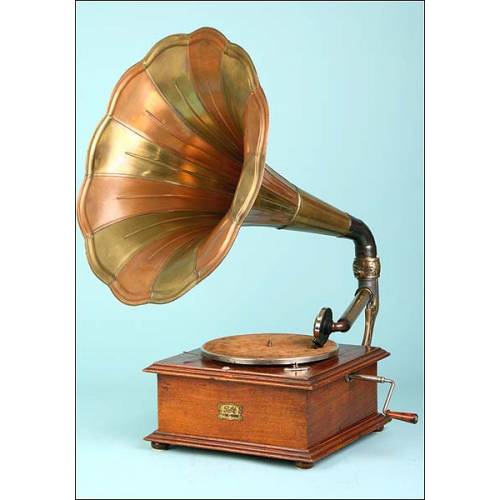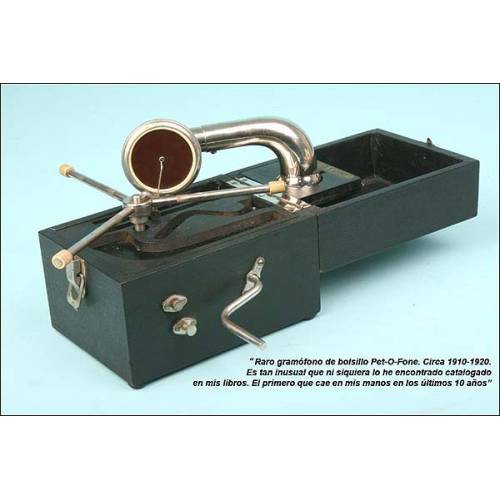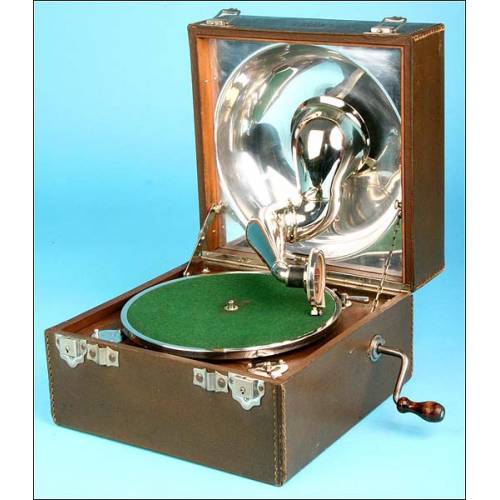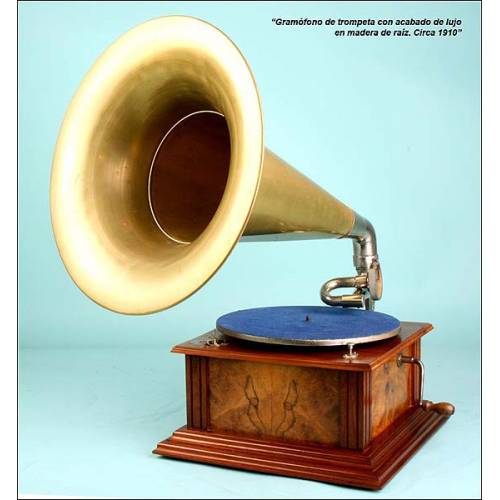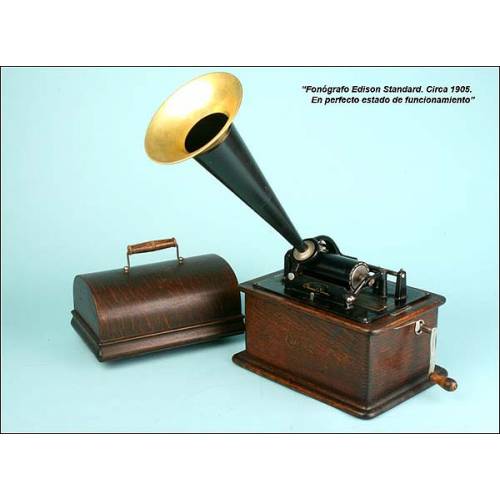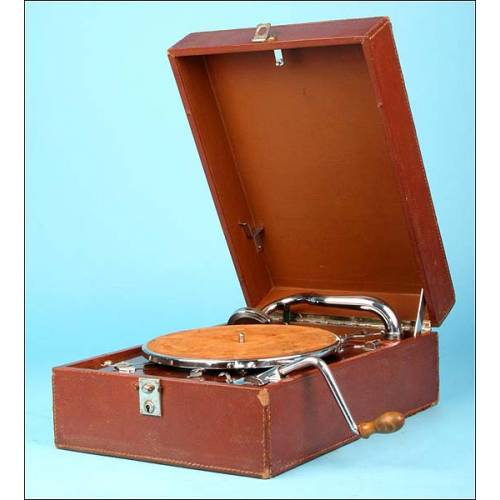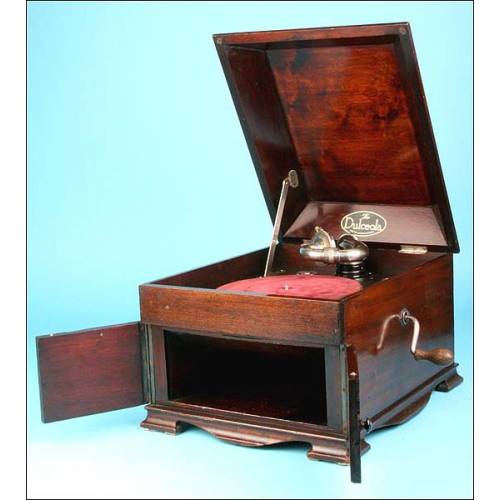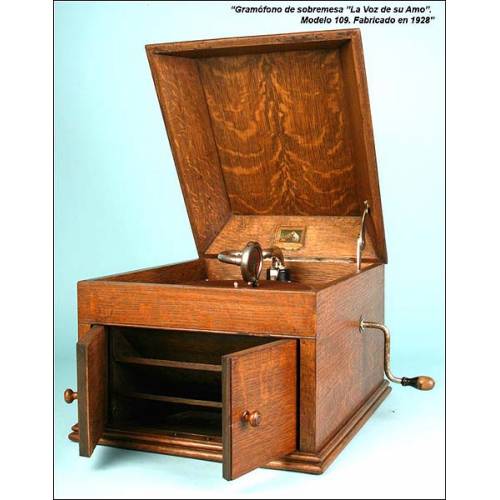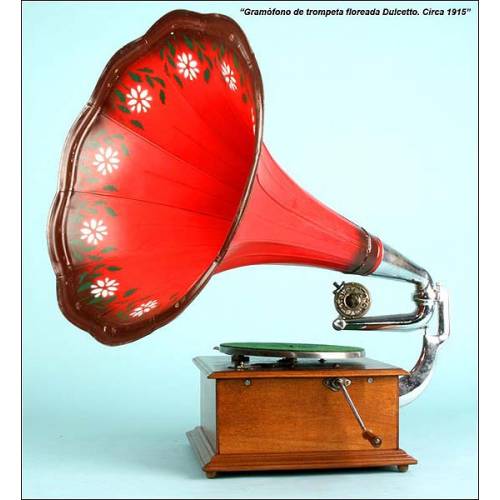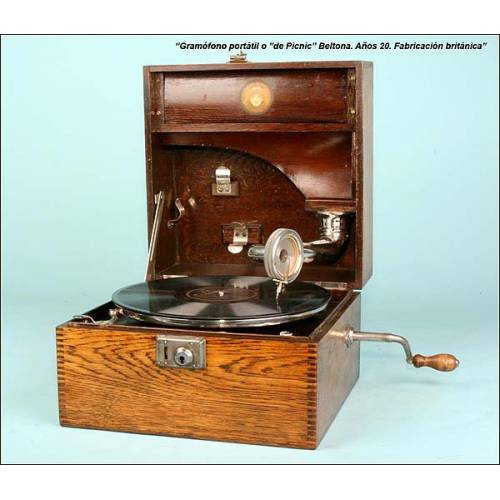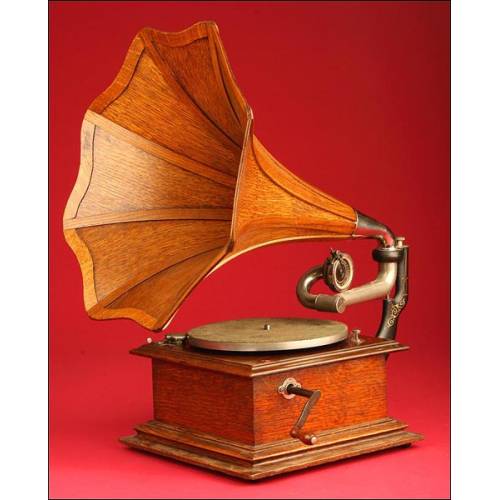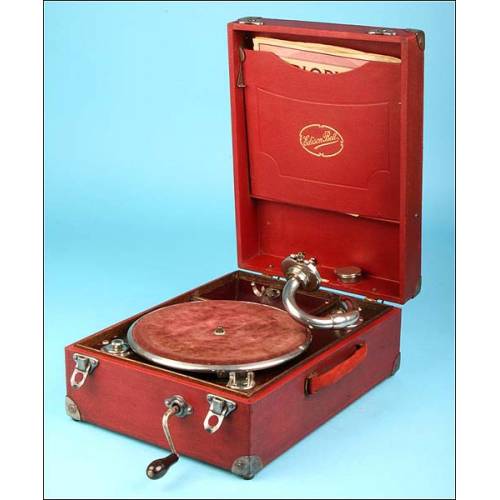C-793
Antique American Victor Monarch Senior Gramophone with Wooden Horn. USA, 1905.
Impressive original Victor Monarch Senior gramophone from the beginning of the 20th century. Very rare model in exceptional condition and working order.
Sold!
Superb antique American Victor Monarch Senior gramophone with wooden horn, made in the USA in 1905-1906. This gramophone is a very rare item that has survived to our days in excellent condition. It has been thoroughly restored, preserving its old-time essence while showing off its original splendor. The motor, a triple-spring design with brass or bronze drum. The gramophones sound quality is amazing, loud and clear, and makes it possible to enjoy playing antique and charming records. The box is designed to mount two different types of horn, both rear and front, so the buyer could choose which to mount in his gramophone. This feature can only be seen in Victor Monarch gramophones made in the very early 20th century, the first ones launched by the company. The gramophones box is made of solid oak wood with a gorgeous French-polish finish. It is decorated with hand-carved classic borders that enhance its good looks, and with carved corner columns. Riveted to one of the sides there is a black-enameled brass plate with the famous logo depicting the dog Nipper listening to a gramophone. Under this image we can see the items model and serial number: MS 11428. The plate is as well preserved as the rest of the component parts. The reproducer is an original Exhibition model from The Gramophone Company. Last but not least, the horn that crowns the item is a striking piece, made of polished and lacquered oak wood and in outstanding condition. This superb antique American Victor Monarch Senior gramophone with wooden horn will dazzle everyone in a stylish dining room. Measurements: Box: Side: 12.4 in / 31 cm. Height: 7.4 in / 18.5 cm. Horn: Length: 26.8 in / 67 cm.Victor Talking Machine Co. - History The Victor Talking Machine Company was founded in 1902 by Eldridge Johson, owner of a small machine shop in New Jersey (USA) after the proposal made by Emile Berliner to produce a low-cost spring motor to build a phonograph for his records. In the late 1880s, Berliner had invented a flat phonograph record that could be mass-produced. At the same time Edison had designed the cylinder phonograph, but the cylinders could not be mass-produced. After a complicated series of patent infringements and lawsuits, Berliner was restricted from selling his products in the USA so he moved to Canada. It was then when the Victor Talking Machine Company was founded; it was the beginning of a history of success. In 1906 the company launched the Victrola, a gramophone hidden into a piece of furniture which become a real success. During World War I the business declined but sales rose again after the content. In 1925 they produced the Ortohponic Victrola with an improved quality sound. At the late 1920s Johnson sold the company to RCA and it was renamed RCA-Victor.

